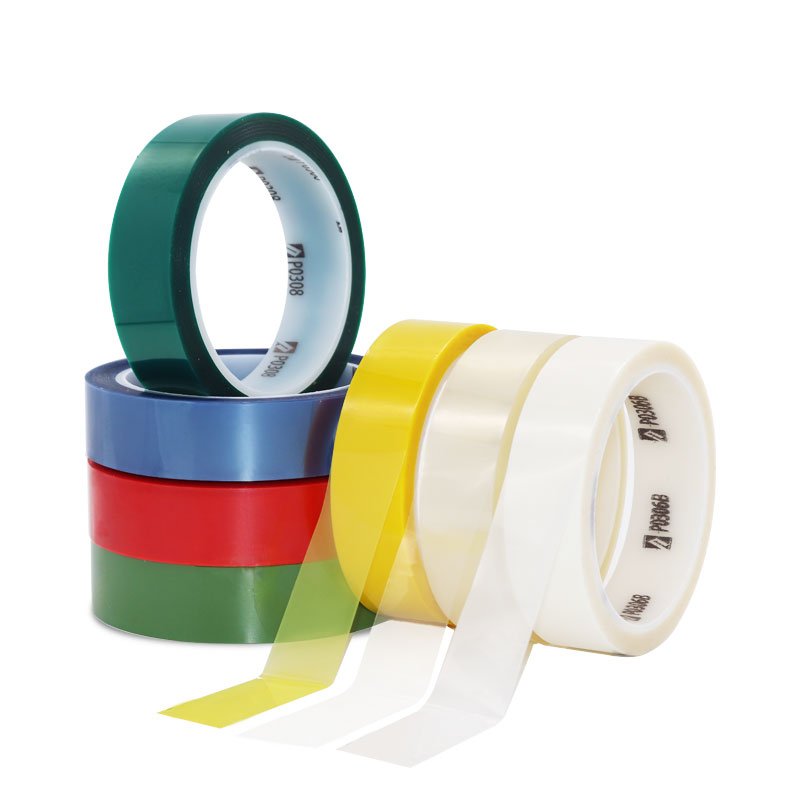What is PE Electrostatic Film Tape?
Polyethylene (PE) Electrostatic Film Tapes are a highly effective alternative to cloth tapes, particularly in harsh conditions and low temperature environments, providing a high-performance solution for end users. These are specialist adhesive tapes that can combine a multitude of performance characteristics including abrasion resistance, excellent adhesion (particularly to PE film), good strength and reliable bonding to a wide range of surfaces and substrates. In addition, many PE tapes offer clean peel and additional characteristics such as UV performance.
Polyethylene (PE) tape is used extensively for a full range of multi-purpose, industrial assembly applications ranging from general masking to heavy duty surface protection. PE tapes are also widely used for barrier containment, lane marking, and social distancing per
global COVID-19 public health directives. In addition, Scapa’s specialist range includes the new Polyflex Plus PE tapes with fire retardancy and UV performance for more specialist applications.
PE tapes are a highly-effective alternative to cloth tapes as they offer a premium
performance solution, particularly in harsh conditions and low temperature environments.
These specialized adhesive tapes combine a multitude of performance characteristics
including abrasion resistance, excellent adhesion (particularly to PE), good strength and
reliable bonding to a wide range of surfaces and substrates. Many PE tapes also offer the
advantage of a clean peel and additional characteristics such as UV performance or fireretardancy.
Polyester, or Polyethylene Terephthalate (PET) is a plastic material produced by reacting terephthalic acid with ethylene glycol – two substances produced in the crude oil / naptha cracking chain.
During manufacture, polyester “chips” are fed into a heated extruder and the molten polyethylene terephthalate (PET) is then extruded onto a chill roll, which quenches it into the amorphous state. It is then biaxially oriented by a process known as drawing.
The most common way of doing this is the sequential process, in which the film is first drawn in the machine direction using heated rollers and subsequently drawn in the transverse direction, i.e. at 90° to the direction of travel, in a heated oven.
Draw ratios are typically around 3 to 4 in each direction.
Once the drawing process is completed, the film is “heat set” or crystallised under tension in the oven at temperatures typically above 200 °C. The heat setting step prevents the film from shrinking back to its original un-stretched shape and
locks in the molecular orientation in the film plane. The orientation of the polymer chains is responsible for the high strength and stiffness of biaxially oriented PET film. Another important consequence of the molecular orientation is that it induces the formation of many crystal nuclei.
The crystallites that grow rapidly reach the boundary of the neighbouring crystallite and remain smaller than the wavelength of visible light. As a result, unfilled biaxially oriented PET film has excellent clarity, despite its semicrystalline structure.
What are the benefits of polyester film tape?
Polyester film has many advantages over other plastic products, the most obvious being thermal stability and tensile strength. It also has excellent gas and moisture barrier properties, good clarity and chemical stability.
The many advantages of polyester film can be exploited in different ways according to the wide variety of possible applications, some of which are listed below.
Strength – hanging displays, tags and labels
Clarity – over-lamination, archival storage, safety window film
Thermal Stability – ovenable packaging film, electrical insulation at elevated temperatures
Printability – by a variety of techniques including offset, flexo, gravure, digital
Whiteness – as a synthetic paper mostly for print applications
Rigidity & Flatness – in tickets, tags and card applications
Sealability – can be heat sealed over a wide range of temperatures
Chemical Stability – medical test strips, hazardous substance labelling.















